- Optomechanics
- Precision Optics
- Singlets
- LINOS Achromats & Lens Systems
- LINOS Laseroptics & Lenses
- LINOS Machine Vision Solutions
- Micro Imaging
- Polarization Optics
- Mirrors
- LINOS Thin Film Coatings
- LINOS Faraday Isolators
- LINOS Laser Modulators & Pockels Cells
- Prisms
- Spectral & Neutral Filters
- Beamsplitters
- Optical Windows & Diffusers
- Optics Software
- Lightsources & Laser
- New Products
Pockels cells Technical Information

The Electro-Optic Effect
The linear electro-optic effect, also known as the Pockels effect, describes the variation of the refractive index of an optical medium under the influence of an external electrical field. In this case certain crystals become birefringent in the direction of the optical axis which is isotropic without an applied voltage.
When linearly polarized light propagates along the direction of the optical axis of the crystal, its state of polarization remains unchanged as long as no voltage is applied. When a voltage is applied, the light exits the crystal in a state of polarization which is in general elliptical.
This way phase plates can be realized in analogy to conventional polarization optics. Phase plates introduce a phase shift between the ordinary and the extraordinary beam. Unlike conventional optics, the magnitude of the phase shift can be adjusted with an externally applied voltage and a λ/4 or λ/2 retardation can be achieved at a given wavelength. This presupposes that the plane of polarization of the incident light bisects the right angle between the axes which have been electrically induced. In the longitudinal Pockels effect the direction of the light beam is parallel to the direction of the electric field. In the transverse Pockels cell they are perpendicular to each other. The most common application of the Pockels cell is the switching of the quality factor of a laser cavity.
Q-Switching
Laser activity begins when the threshold condition is met: the optical
amplification for one round trip in the laser resonator is greater than
the losses (output coupling, diffraction, absorption, scattering). The
laser continues emitting until either the stored energy is exhausted, or
the input from the pump source stops. Only a fraction of the storage
capacity is effectively used in the operating mode. If it were possible
to block the laser action long enough to store a maximum energy, then
this energy could be released in a very short time period to form a
giant light pulse.
A method to accomplish this is called Q-switching. The resonator quality, which represents the losses in the resonator, is kept low until the maximum energy is stored. A rapid increase of the resonator quality then takes the laser high above threshold, and the stored energy can be released in a very short time. The resonator quality can be controlled as a function of time in a number of ways. In particular, deep modulation of the resonator quality is possible with components that influence the state of polarization of the light. Rotating the polarization plane of linearly polarized light by 90°, the light can be guided out of the laser cavity by a polarizer.
The modulation depth, apart from the homogeneity of the 90° rotation, is only determined by the extinction ratio of the polarizer. The linear electro-optic (Pockels) effect plays a predominant role besides the linear magneto-optic (Faraday) and the quadratic electro-optic (Kerr) effect. Typical electrooptic Q-switches operate in a so called λ/4 mode.
a) Off Q-Switching
Light emitted by the laser rod (1) is linearly polarized by the polarizer (2). If a λ/4 voltage is applied to the Pockels cell (3), then on exit, the light is circularly polarized. After reflection from the resonator mirror (4) and a further passage through the Pockels cell, the light is linearly polarized again, but the plane of polarization has been rotated by 90°. The light is deflected out of the resonator at the polarizer. Hence the resonator quality is low and the laser does not start to oscillate. At the moment the maximum storage capacity of the active medium has been reached, the voltage of the Pockels cell is turned off very rapidly; the resonator quality increases immediately and a very short laser pulse is emitted. The use of a polarizer can be omitted for active materials which show polarization dependent amplification (e.g. Nd:YAlO3, Alexandrite, Ruby, etc.).
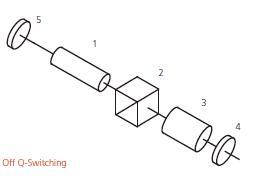
b) On Q-Switching
Unlike off Q-switching, a λ/4 plate (6) is used between the Pockels cell (3) and the resonator mirror (4). If no voltage is applied to the Pockels cell the laser resonator is blocked: no laser action takes place. A voltage pulse then compensates for the waveplate thus opens the resonator and permits the emission of laser light.
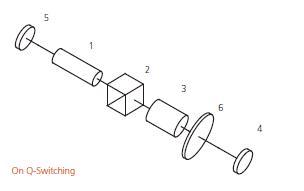
Pulse Picking
Typically femto second lasers emit pulses with a repetition rate of several 10 MHz. However, many applications like regenerative amplifying require slower repetition rates. Here a Pockels cell can be used as an optical switch: by applying ultra fast and precisely timed λ/2-voltage pulses on the Pockels cell, the polarization of the laser light can be controlled pulse wise. Thus, combined with a polarizer the Pockels cell works as an optical gate.
Selection Criteria
The selection of the correct Q-switch for a given application is determined by the excitation of the laser, the required pulse parameters, the switching voltage, the switching speed of the Pockels cell, the wavelength, and the polarization state of the light.
Type of Excitation
Basically, both off and on Q-switching are equivalent in physical terms for both cw and for pulse pumped lasers. On-Q-switching is, however, recommended in cw operation because a high voltage pulse and not a rapid high voltage switch-off is necessary to generate a laser pulse. This method also extends the life time of the cell. Over a long period of time, the continuous application of a high voltage, as well as λ/2 voltage applications would lead to electrochemical degradation effects in the KD*P crystal. We advise the use of an Q-switching driver.
Off Q-switching is more advantageous for lasers stimulated with flash lamps because the λ/4 plate is not required. In order to prevent the electrochemical degradation of the KD*P crystal in the off Q-switching mode we recommend a trigger scheme in which the high voltage is turned off between the flashlamp pulses and turned on to close the laser cavity before the onset of the pump pulse.
To ensure a long life time of the Pockels cell, the duty cycle, defined as On-time /(On-time + Off-time) should not exceed 5%.
The CPC- and SPC-series cells are recommended for diode pumped solid state lasers. These cells are ultra compact and will operate in a short length resonator: this is necessary to achieve very short laser pulses.Pulse Parameters
The LM n IM, and LM n SG series cells are recommended for lasers with a power density of up to 2 GW/cm². The LM n and LM n SG cells are used for lasers with very high amplification. The SG cells with Sol-Gel technology have the same transmission as the immersion cells and both are typically used when a higher transmission is required.
Brewster Pockels cells are recommended for lasers with low amplification, such as Alexandrite lasers. The passive resonator losses are minimal due to a high transmission of 99%.
The CPC and SPC series cells are suitable for small, compact lasers and especially for OEM applications. They are available as Sol-Gel cells and immersion cells.
The level of deuterium content in a KD*P crystal influences the spectral position of the infrared edge. The higher the deuterium level the further the absorption edge is shifted into the infrared spectral region: for Nd:YAG at 1064 nm, the laser absorption decreases. Crystals, which are deuterated to > 98%, are available for lasers with a high repetition rate or a high average output power.
Double Pockels Cells
Using double Pockels cells can halve the switching voltage. This is achieved by switching two crystals electrically in parallel and optically in series. The damage threshold is very high and the cells are mainly used outside the resonator.
Electro-optic material
The selection of the electro-optic material depends on its transmission range. Further on, the laser parameters as well as the application have to be taken into account.
For wavelengths from 0.25 μm to 1.1 μm, longitudinal Pockels cells made of KD*P and a deuterium content of 95% should be considered. If the deuterium content is higher the absorption edge of the material is shifted further into the infrared. KD*P crystal cells with a deuterium content > 98% can be used up to 1.3 μm.
KD*P can be grown with high optical uniformity and is therefore recommended for large apertures.
The spectral window of BBO also ranges from 0.25 μm to 1.3 μm. In addition, BBO crystals provide a low dielectric constant and a low absoption. Therefore, BBO is recommended for lasers with high repetition rate and high average powers.
RTP, with an optical bandwidth from 0.5 μm up to 3 μm, combines low switching voltage and high laser induced damage threshold. Together with its relative insensitivity for Piezo effects RTP is best suited for precise switching in high repetition rate lasers with super fast voltage drivers.
Suppression of Piezo effects
Like any other insulating material electro optical crystals show Piezo effects when high voltage is applied. The extent of the Piezo ringing depends on the electro optic material and usually its effect on the extinction ratio is negligible when used for Q-switching. However, for pulse picking applications, which require highly precise switching behaviour, Qioptiq offers specially Piezo damped Pockels cells which suppress these ringing effects efficiently.
State of Polarization
The CIQS-series cells are supplied with an integrated polarizer and an optional waveplate: The alignment of the Pockels cell relative to the polarizer thus can be omitted. The rotational position of the cell relative to the resonator axis can be chosen at will. However, should the polarization state of the light in the resonator be determined by other components, such as anisotropic amplification of the laser crystal or Brewster surfaces of the laser rod, then the rotational position of the cell will be determined by these factors. Thin film polarizers are used and the substrate is mounted at the Brewster angle. A parallel beam displacement of 1 mm results from this configuration and can be compensated by adjusting the resonator easily.




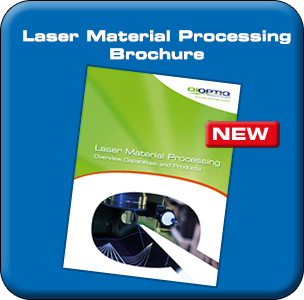
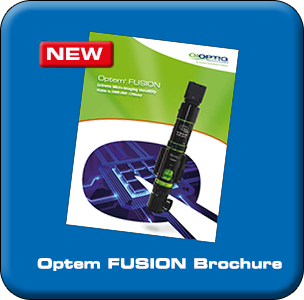
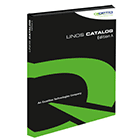 Order Catalog
Order Catalog